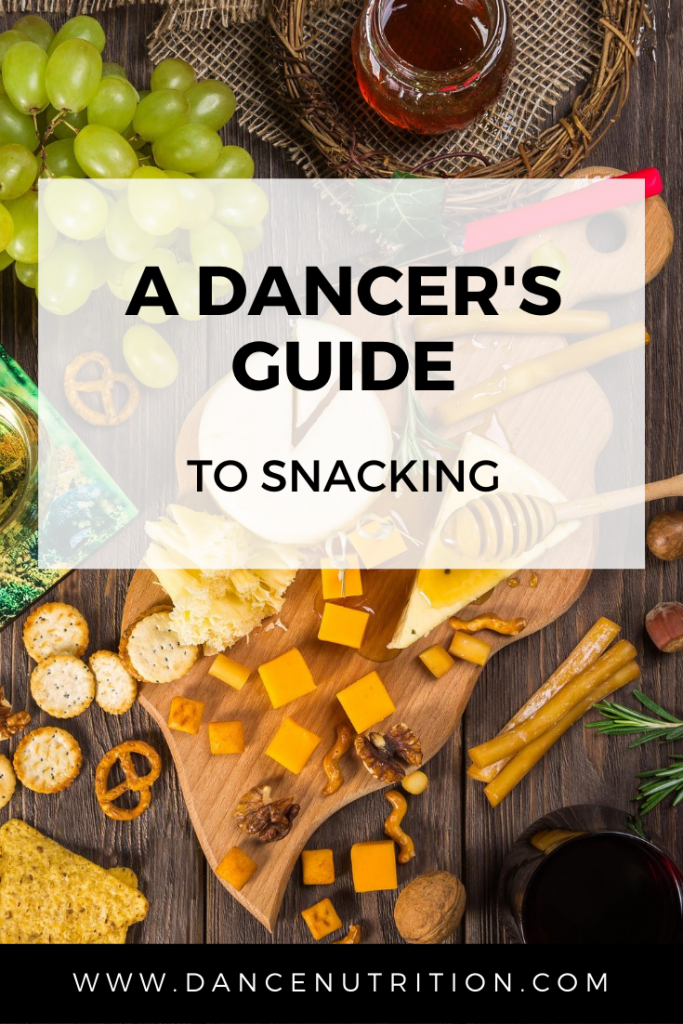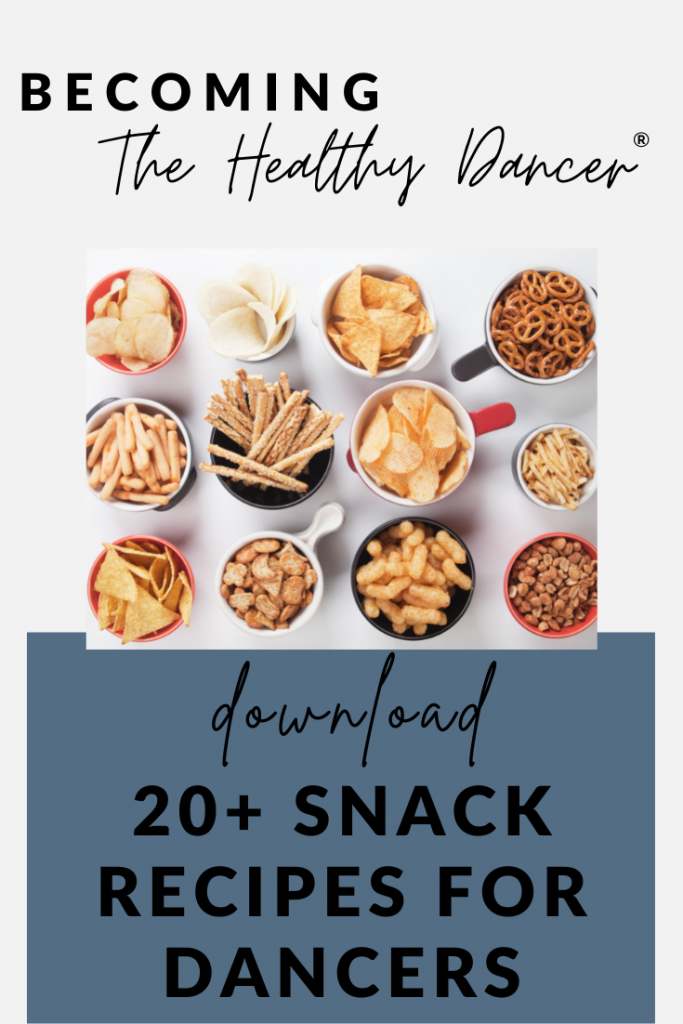For dancers, abundance and variety are fundamentals when building meal plans. Three balanced meals (breakfast, lunch, and dinner) make up the framework for any dancer’s day, and most often, adding 1, 2, or even 3 snacks is essential. However, busy schedules with classes and back-to-back rehearsals can make this challenging.
While I encourage dancers to optimize each eating opportunity as a chance to fuel for performance, many hesitate to snack. This is especially true for those misinformed, often striving to diet, limit food intake, or count calories in the pursuit of “lifestyle changes” or weight loss.
Realize, however, that deprivation eventually backfires. Our bodies ultimately fight back against food restriction— signals like excessive hunger, cravings, overwhelming food thoughts, and emotional eating are just some of the consequences encountered when we follow a “less-is-more” mindset around food.
The inability to eat a full meal, for example, lunch, is common with a dancer’s busy schedule. To combat this, dancers should optimize their snack game, considering timing, convenience, and balance. Relying on smaller nutrient- and energy-dense options incorporating all three macronutrients (proteins, fats, and carbs) can replace the need for a full meal. Turning lunch into two smaller “mini meals” each containing this nutrient mix is helpful, especially during quick changes and on-the-go schedules.
Smart Snacking, But How?
Dance is an intermittent (or interval) activity that involves recurrent starts and stops within a few hours. Think about your rehearsal: much of your time might be spent standing and waiting for your cast to rehearse while other times actively executing the steps.
At baseline, fibrous carbohydrates, like those found in whole grains (oatmeal, quinoa, bulgur, whole wheat, and barley), are optimal for sustaining your energy during this type of training. Incorporate protein into the mix to help you feel full until your next eating opportunity. Eggs, cottage cheese, and yogurt supply a hefty dose of muscle-building amino acids. Plant sources of protein like quinoa, beans, legumes, nuts, and seeds are also beneficial. Fat is the last part of the equation. Omega-3s help to lessen the natural inflammation that arises from intense dancing. Avocadoes, nuts, chia seeds, and flax are examples of plant-based sources of these fats.
10+ Snacks to Pack for Long Dance Days
- Fruit and nut bars
- DIY oat bites
- Chicken salad with whole-grain crackers.
- Yogurt with granola and chopped nuts (or seeds).
- Bento boxes filled with pita sandwiches, sliced veggies, and hummus, crackers
- Trail mix (try an easy DYI option with dried fruit, dried coconut flakes, nuts, pretzels, or whole-grain cereal— portioned into baggies)
- String cheese served with crackers
- Fresh Fruit such (easy pack-along options like bananas, tangerines, and apples) paired with a nut or seed butter (pro tip: scoop a generous amount into a baggie and upon serving, rip a small hole at the corner for a DIY squeeze baggie)
- Turkey roll-ups with sliced avocado, bell peppers, and a piece of fruit.
- Tuna salad served with whole grain crackers and veggies.
- Wheat bread is often easier to digest than heartier grain bread. Spread peanut butter, almond butter, (or an allergy-friendly seed butter), and top with sliced bananas.
What about snack timing?
If your snack falls 30-60 minutes before dancing, consider an easily digestible carbohydrate—lower fiber snack to top glycogen and maintain your physical stamina. Pretzels and fresh fruit (such as a banana, clementine, or an apple) are examples of smaller, easily digestible carbs that shouldn’t leave you feeling sluggish. Additional examples include:
- Applesauce or a fruit smoothie pack
- Dried fruit (or fresh fruit)
- Homemade “energy balls” made with dates, oats, flax, and honey
- Pretzels
- A fruit-based bar (such as LARA bars)
Body attunement and snacking
Some obstacles often impede a dancer’s ability to get in these snacks at optimal times. Busy and active schedules make it challenging to honor body attunement: the practice of bringing awareness to your body’s current needs. The goal is to eventually gain the ability to build a personal body of evidence each day to decide whether or not it’s time for a snack or energy refuel. Understanding hunger cues is another helpful strategy, but I encourage you to eat a snack even with subtle signs of hunger (like thoughts about food). Waiting too long can leave you feeling ravenous and less likely to eat mindfully.
For the dancers who work with me in The Healthy Dancer®, one tactic we utilize early on is simply setting phone reminders for snacks. You might set one, two, or even three reminders between meals— using each as an opportunity to explore current appetite cues and energy levels. From here we utilize The Healthy Dancer® Food Flexibility Algorithm to help with snack choices. You might consider your preferences (flavors, aromas, textures?) and whether or not those preferences are accessible.
Is it okay to snack after dancing?
Pairing these carbohydrates with a protein source, such as string cheese or hard-boiled eggs, is ideal after dancing to support muscle rebuilding. If time permits, a protein smoothie (store-bought or homemade) is a great option. Additional recovery snacks include:
- Chocolate milk
- Whole-grain crackers with string cheese or 2 hard-boiled eggs
- Chopped almonds or walnuts in yogurt
- Fresh fruit with nut- or seed- butter
Hydration is also key during times of dancing. Aside from plain water, pairing your snacks with unsweetened coconut water helps to replenish lost electrolytes and prevent mental fatigue. The added potassium also alleviates cramping, which is especially common on humid days when you’re sweating more than usual.
For additional snack recipes and ideas, check out this article and for help in choosing convenient options, click here.




